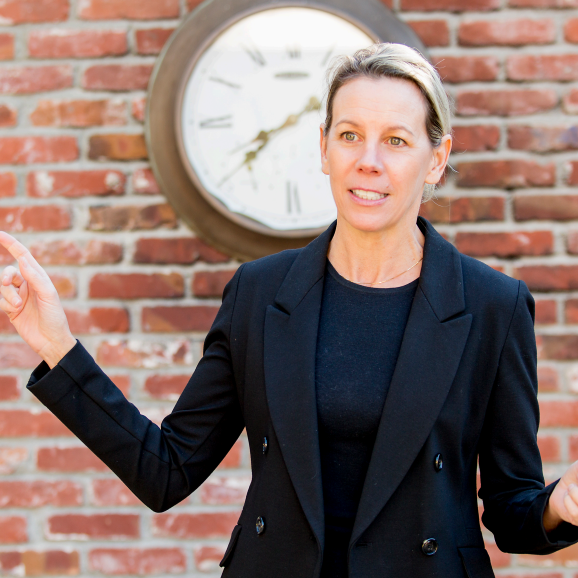Speaker
Paolo Gaudiano

Book this Speaker
To learn more about Paolo Gaudiano or book them as a speaker, please contact us.
Bio
Paolo Gaudiano is President of ARC, Chief Scientist of Aleria, Adjunct Associate Professor at the NYU Stern School of Business, and Chairman of the annual Diversity & Inclusion Research Conference. These activities combine Paolo’s decades of experience in business, technology and academia, to transform how people think about diversity and what they do about it, with the ultimate goal of making our society more inclusive and equitable. Paolo is a Forbes contributor on Diversity & Inclusion, has written for and been interviewed by a number of other media outlets, and is a sought-after public speaker, having given hundreds of presentations in the US and abroad, including a TED talk. He holds degrees in Applied Mathematics, Aerospace Engineering and Computational Neuroscience, and is the recipient of numerous awards including a Moonshot House Fellowship from the Kravis Center for Social Impact (2019), a Young Investigator Award from the Office of Naval Research (1996), and a Neuroscience Fellowship from the Sloan Foundation (1992). He was a tenured faculty member at Boston University and he taught at Tufts University and CUNY before joining NYU.
Speaking Topics
How to Unscramble an Egg
What do the stock market, a baseball team and a power grid have in common? They are all examples of "complex systems” — systems made of many interconnected elements whose overall, “emergent" behaviors can be unpredictable. Stock market crashes, unexpected losses in sports, and the recent blackouts in Spain and Portugal are all examples of emergent behaviors. This fascinating talk introduces a unique way of studying complex systems using simple, intuitive computer simulations. Leveraging more than three decades of multidisciplinary experience across academic, entrepreneurial and consulting work, the speaker will share examples and interactive demonstrations from neuroscience, technology, workforce management, and many other areas to explain how it is possible to unscramble these seemingly intractable problems.
Measuring Inclusion: Higher Profits and Happier People, Without Guesswork or Backlash
This module introduces a novel approach to Diversity, Equity & Inclusion (DEI), grounded in a unique human-centric, analytical methodology. Starting with clear and simple definitions, the module shows how to measure workplace experiences rather than identity traits, and how this avoids the controversy and polarization that plague traditional approaches to DEI.
Through a combination of computer simulations, real-world case studies and sample data, participants will understand how low levels of inclusion leads to invisible financial losses and less diversity, and how measuring inclusion can guide organizations to superior financial results, without costly guesswork or the risk of backlash.
How to Link DEI and Corporate Finance
Most organizations think of DEI as a “bolt-on” activity to be added to various parts of the organization. Coupled with the potential backlash of poorly designed DEI initiatives, this discourages a lot of leaders from embracing DEI.
This module introduces a radically different way of leveraging DEI by drawing parallels with the way most companies manage their finances. We show how organizations can think of their human assets similarly to how they think about their financial assets.
The module draws clear analogies between the three financial statements (balance sheet, income statement, cash flow) and the three elements of DEI (diversity, equity, inclusion), explaining how organizations can benefit by using familiar approaches from financial management to manage their human assets. This leads to a vision for how organizations can embed DEI in all parts of the organization with minimal effort and little pushback.
How to Reconcile MEI and DEI
Opponents of DEI have suggested that a better way to manage people is by focusing on Merit, Excellence, and Intelligence as opposed to Diversity, Equity, and Inclusion.
Rather than trying to argue which is better, this module takes an analytical look at all of these terms, to explain why all of these terms can be easily misinterpreted or misrepresented, and sometimes can lead to diametrically opposite interpretations.
For example, the concept of “meritocracy,” while hailed by MEI supporters as an unbiased way to ensure that the best talent is recognized, DEI supporters have argued that so-called meritocracies often create significant biases and disparities.
As another example, DEI opponents claim that “equity” means enforcing equal outcomes for everyone, regardless actual achievements; while DEI supporters describe “equity” to mean that someone who is qualified for a job should have the same chance as anyone else to get that job (which is surprisingly consistent with the definition of “merit”).
In this module we dig beyond the superficial descriptions to point out that many of these terms are poorly defined, which makes it possible to give them a wide range of interpretations. We also point out that the divergent viewpoints often reveal underlying assumptions that are flawed or inconsistent. We show how to analyze these arguments carefully, and conclude that, in fact, DEI and MEI do not need to be at odds, and in many ways are actually striving for the same ideals.
How and Why to Bias-Proof Your Organization
This module discusses the role of biases in influencing the experiences and wellbeing of employees. The module begins with a discussion of biases, and an overview of traditional approaches such as Unconscious Bias Training. We then discuss some of the limitations and problems with these traditional approaches, and introduce a new framework to distinguish between individual, organizational, and contextual biases.
The module explains why organizational biases are the most significant sources of challenges in organizations, and how to identify different types of organizational biases. We discuss why and how these types of biases can be measured to quantify inequities and engage in an interactive activity to help put these ideas into practice. We also discuss why these inequities lead to retention problems and overall imbalances that cost organizations money, and how quantifying equity can help to pinpoint and rectify issues to improve overall employee satisfaction and financial outcomes.
Debunking Myths For and Against DEI
DEI has become a controversial and highly polarizing subject. This module takes a candid look at some of the mistakes that have been made both by DEI supporters and DEI detractors, which contribute to a continued misunderstanding and increasingly polarized conversations.
The module begins by discussing a number of ‘myths’ and misconceptions that are commonly held by DEI supporters, which can be misleading and even lead to unintended backlash. Next, the module presents a number of myths and misconceptions that have been used to undermine and suppress DEI efforts. The module explains why many of these arguments sound very compelling and can be hard to refute.
Instead of trying to argue directly against these myths, the module shows how to analyze each myth to identify flaws in the assumptions and reasoning presented in each of these arguments. The module includes candid, sometimes uncomfortable discussions to show in practice how to turn potentially divisive topics into shared understanding.
How DEI Impacts Recruitment
When it comes to increasing diversity, one common complaint is the “pipeline problem,” i.e., the difficulty of finding sufficient talent from diverse backgrounds, especially for certain highly skilled positions. This module explains why the pipeline problem is a myth and shows common mistakes in the way organizations typically go about recruiting talent from diverse backgrounds.
The module then introduces a framework to understand six stages of recruiting talent, and how an organization’s current level of DEI maturity can support or hinder efforts to recruit talent at each of these stages. The module offers practical advice on how to leverage DEI to expand the talent pool, and how DEI can be lower hiring costs while expanding the pool of available talent.
Six Steps for Measuring Inclusion
This module builds on the introductory Measuring Inclusion session. It is meant to help organizations who wish to learn how to measure inclusion for their organization without the support of an external firm.
The module describes the six steps to measuring inclusion for a typical organization, how you can adapt the process to your specific organization, and what outcomes you should expect.
The module also includes a number of tips and suggestions based on years of experience working with a wide range of organizations.
Setting Targets Without Reverse Discrimination
When laying out DEI strategies, most organizations rely on metrics and targets based entirely or primarily on representation (i.e., diversity). Aside from the difficulty of selecting meaningful targets, this is a dangerous practice that can lead to internal backlash. This presentation shows the importance of prioritizing equity and introduces a way of measuring equity that completely avoids the zero-sum game mindset that often leads to complaints about reverse discrimination.
How to Deal With the DEI Backlash
Note: There is some overlap in the content of this module and two additional modules: “Measuring Inclusion” and “Debunking myths about DEI.” If either or both of these other modules are offered as part of a training package, the content of all three modules can be adapted to minimize redundance and to offer more in-depth discussions of each topic.
The backlash against DEI is causing many organizations to backtrack on previous efforts, eliminating positions and initiatives, or changing language to avoid legal challenges. Many business leaders know that DEI is important to the success of their organizations, but are afraid of the ramifications if they continue with the same approaches.
This module discussed candidly some of the problems with traditional and current approaches to DEI. It then introduces a novel way of thinking about DEI to show how to transform DEI challenges into opportunities.
Speaking Topics
- How to Unscramble an Egg
- Measuring Inclusion: Higher Profits and Happier People, Without Guesswork or Backlash
- How to Link DEI and Corporate Finance
- How to Reconcile MEI and DEI
- How and Why to Bias-Proof your Organizational
- Debunking Myths For and Against DEI
- How DEI Impacts Recruitment
- Six Steps for Measuring Inclusion
- Setting Targets Without Reverse Discrimination
- How to Deal with the DEI Backlash






![Buelow-Headshot-20151[1] Buelow-Headshot-20151[1]](https://category6consulting.com/wp-content/uploads/bb-plugin/cache/Buelow-Headshot-201511-square-112341583ed1e7395e808a1af3ad2f9a-.jpg)



